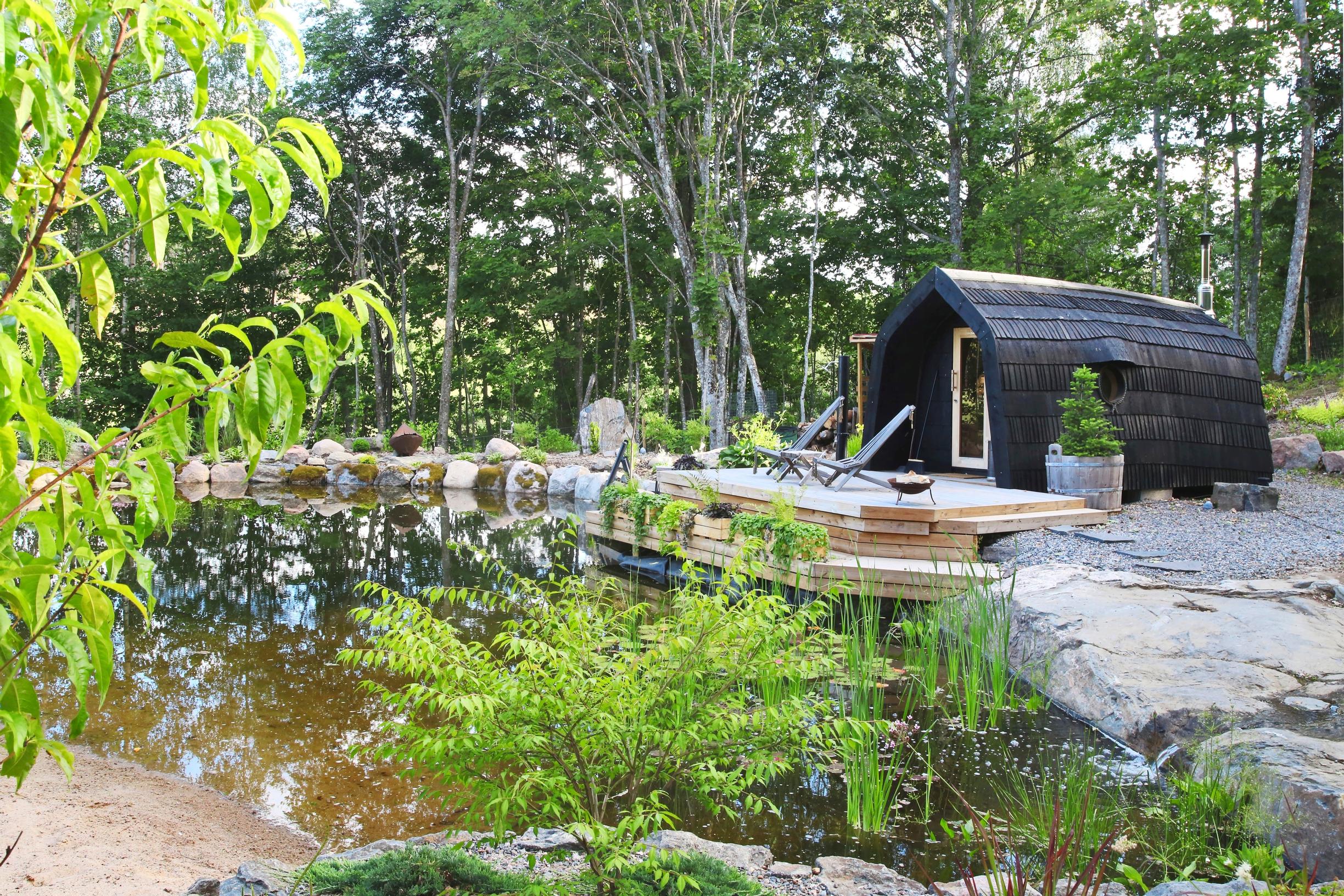
From a dry lot to a waterside oasis! Ritva and Ilkka’s garden now boasts a pond, sandy beach, and a shingle-roof sauna
Ritva Ikonen and Ilkka Halminen had dreamed of a house by the lake. When that proved elusive, they fell for a plot where they could create a natural swimming pond complete with aquatic plants, a sandy beach, a versatile terrace area—and of course, a sauna. With professional help, the transformation was enormous.
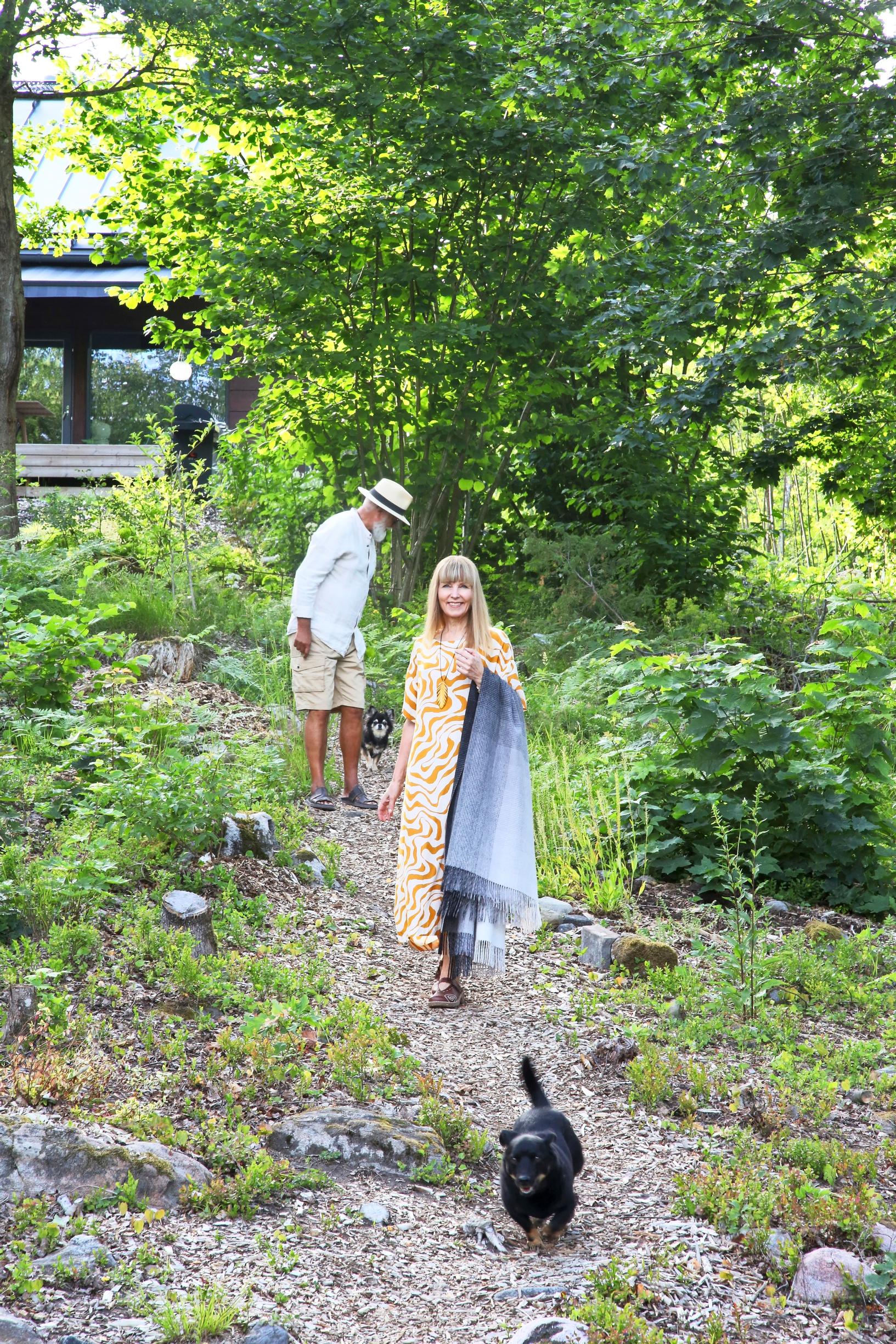
House: A house completed in 2022 along with its adjoining garden in Lohjansaari.
Size: 100 m², a carport, and a garden sauna.
Plot: 1 ha, with approximately 5,000 m² of garden area
Residents: Ritva Ikonen and Ilkka Halminen
Instagram: @satulkarinpuutarha_aasit and @ilkkatapani_art
The gentle sound of water soothes you. A stream meanders among the stones and continues over the bedrock toward the pond. Its surface reflects the blue sky, the clouds, and the surrounding trees. Lohjansaari residents Ritva Ikonen and Ilkka Halminen’s garden boasts a showstopping, naturally landscaped pond of more than 200 cubic meters, where you’ll also find a stylish garden sauna and a terrace area.
“We had dreamed of a house by the lake, but we never found one that suited us. Here, we immediately fell for the lush woodland vibe,” Ritva explains.
Despite the overgrown vegetation, the couple saw the site’s potential and realized that, with a bit of clearing, the views would open up.
“We have a distant view of the lake here, but while exploring the plot, we wondered whether we could have our own pond in the garden,” Ritva says.
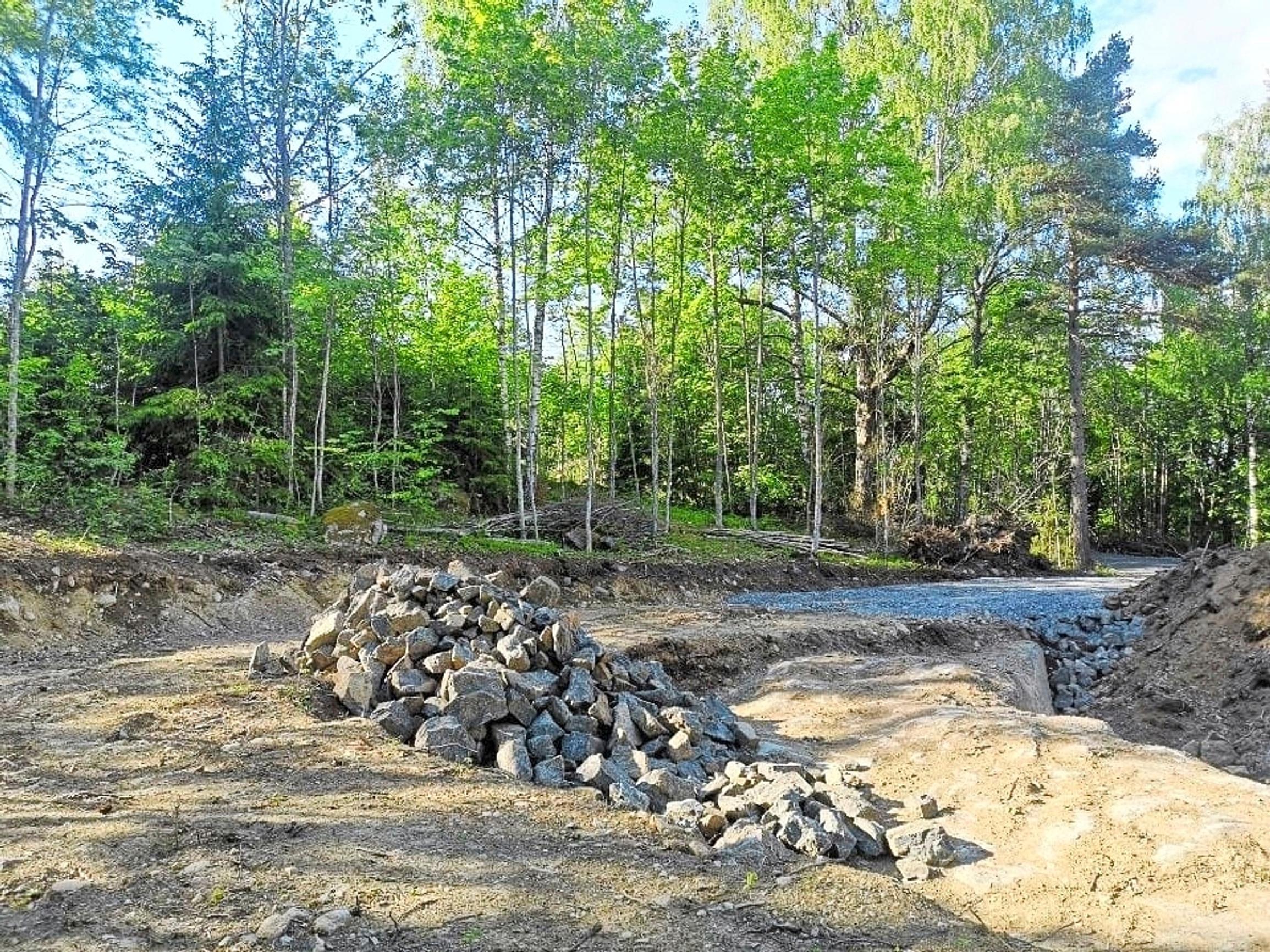
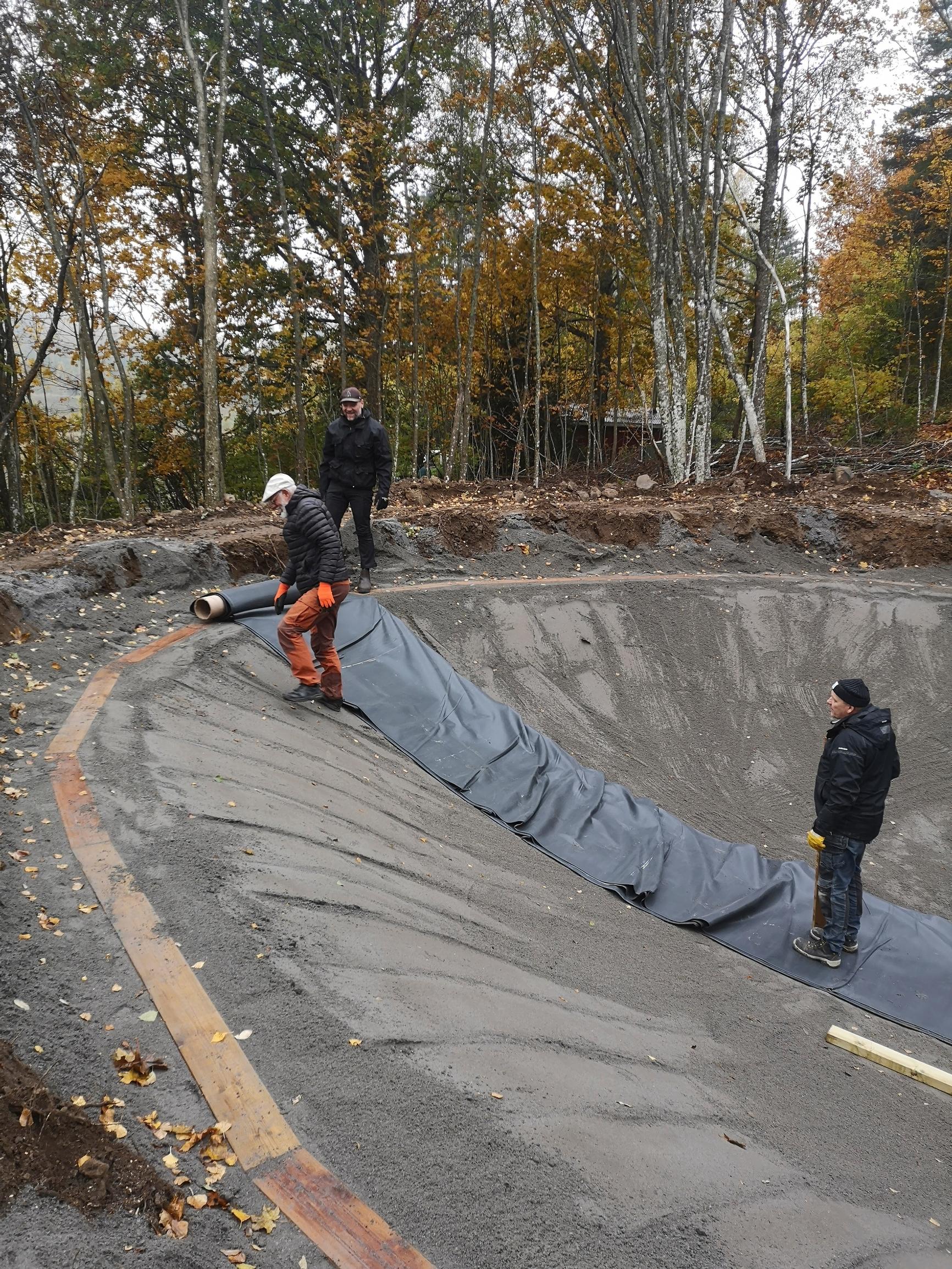
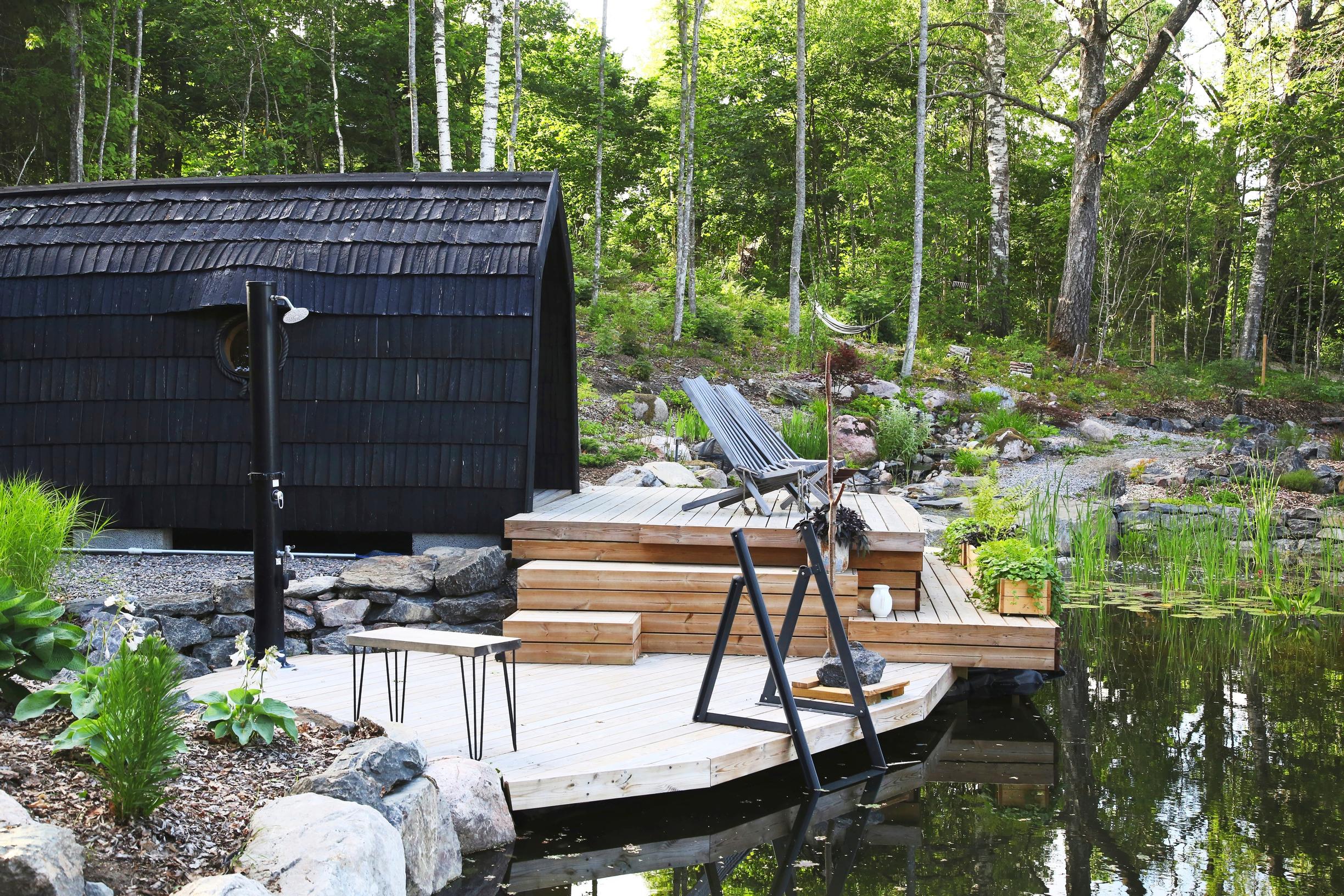
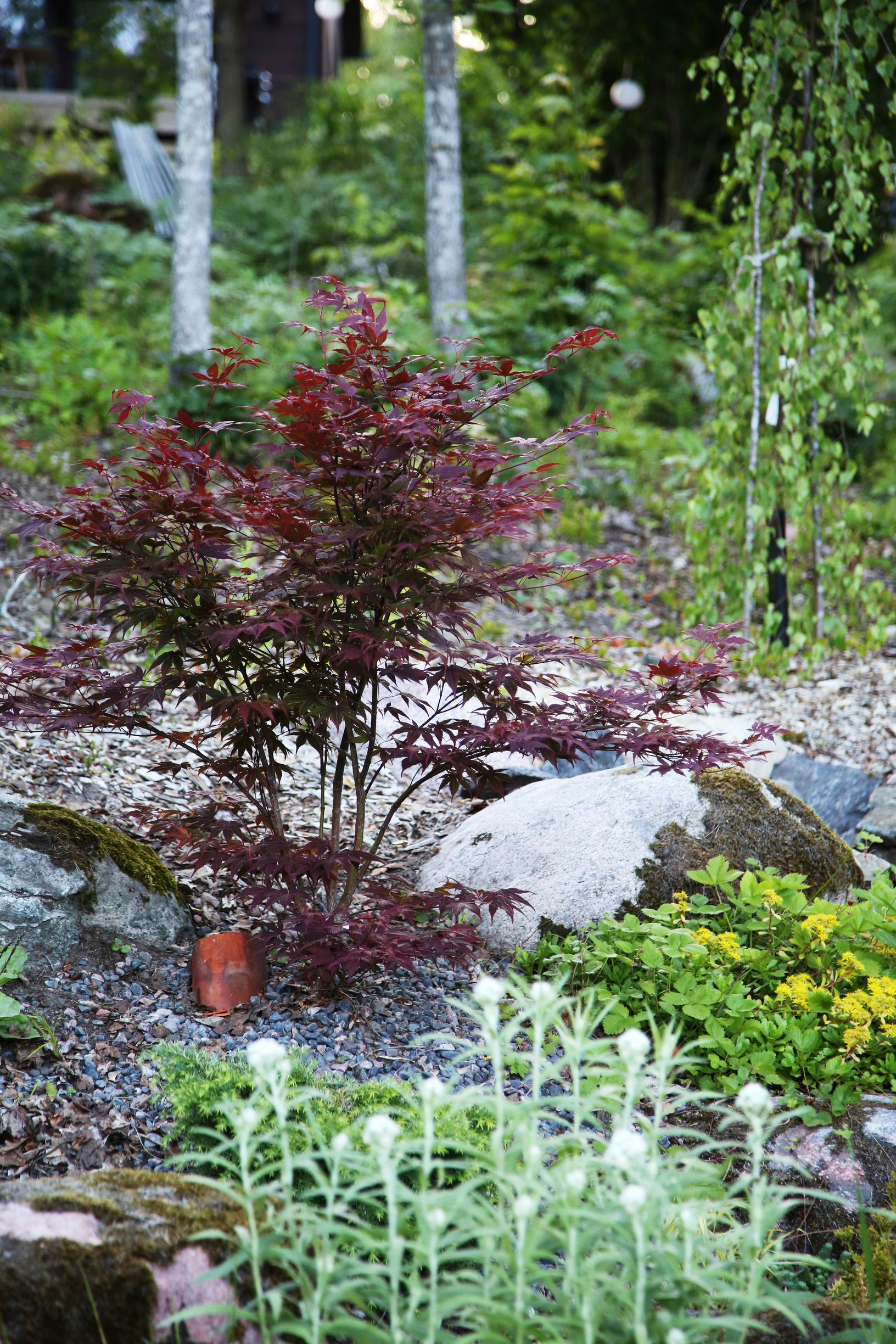
Ritva and Ilkka wanted a pond that looks natural and blends into its surroundings, complete with plants and micro-organisms, even though it would be used for swimming. To help plan and build the garden and the pond, they turned to a familiar gardening professional, who then introduced them to horticulturist-landscaper Jorma Kymäläinen.
“The plot had a low-lying spot suitable for the pond. As we dug, we discovered bedrock, which we wanted to leave partly exposed,” Ilkka explains.
The soil excavated during the earthworks was used to form another edge for the pond.
“I don’t want to use chemicals in the pond. The goal was a water feature that’s as natural as possible.”Ritva
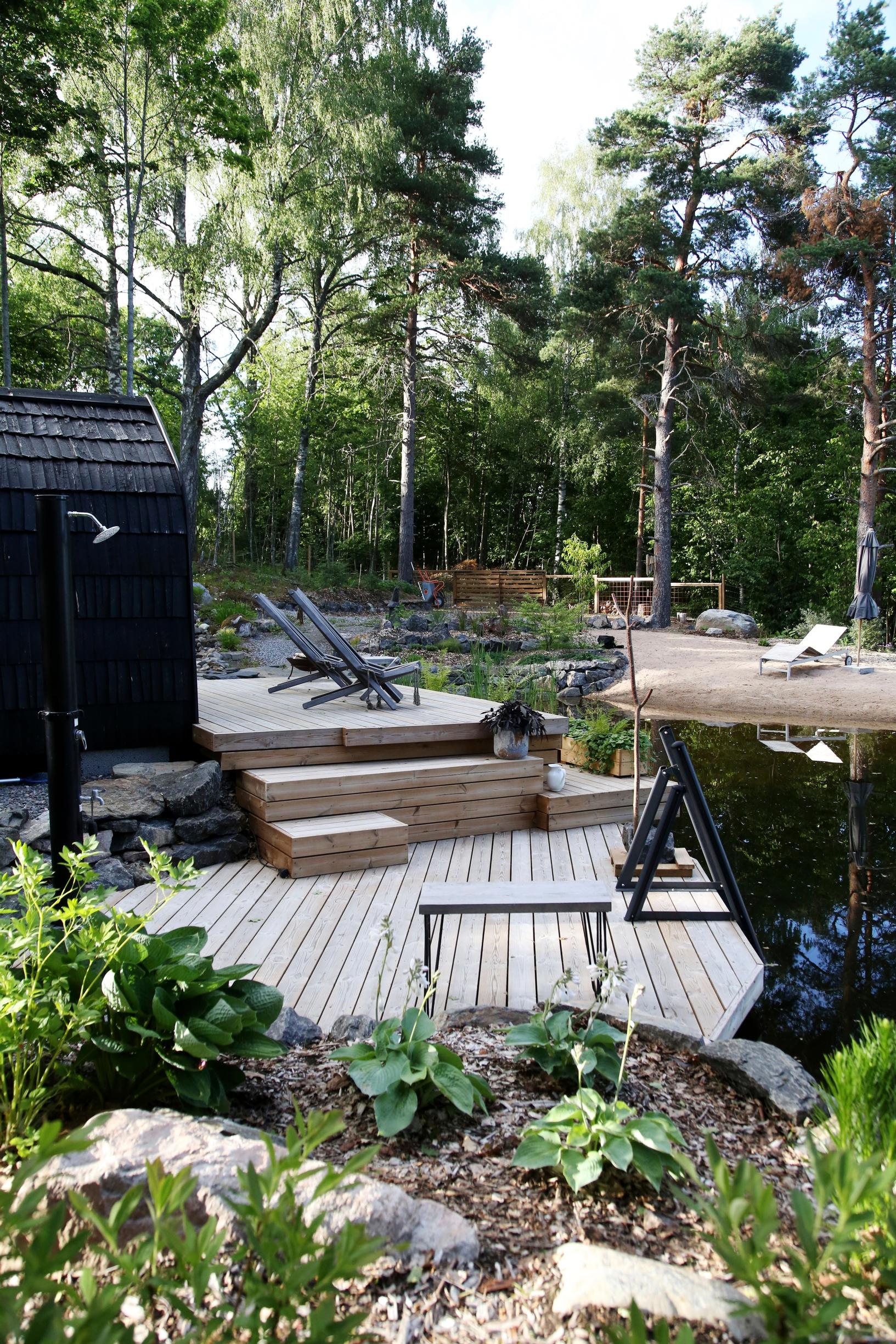
Planning the pond was done partly based on what the earthworks revealed. The bedrock posed certain challenges, but it also provided a unique route for the stream. The bedrock naturally had a small channel for water, which was harnessed when building the stream.
A pump carries water up to a starting basin at the head of the stream. From there, the water flows over slate terraces as small waterfalls into the bedrock channel and back into the basin.
The pond itself was constructed with the simplest possible technique. It needed a natural filtering layer and purifying plants. For that reason, they created one section in the bottom for plants and added a sandy beach next to it. To keep the sand and the clay soil for the plants in place, they formed a raised partition on the bottom: one side is the plant area and sandy beach, while the other side is the swimming zone. You can still swim between these sections, but the raised area prevents soil from washing into the deeper swimming side.
“I don’t want to use chemicals in the pond. The goal was a water feature that’s as natural as possible. With professional help, we reached a great outcome, even though the workload was huge and the financial investment was substantial,” Ritva says.
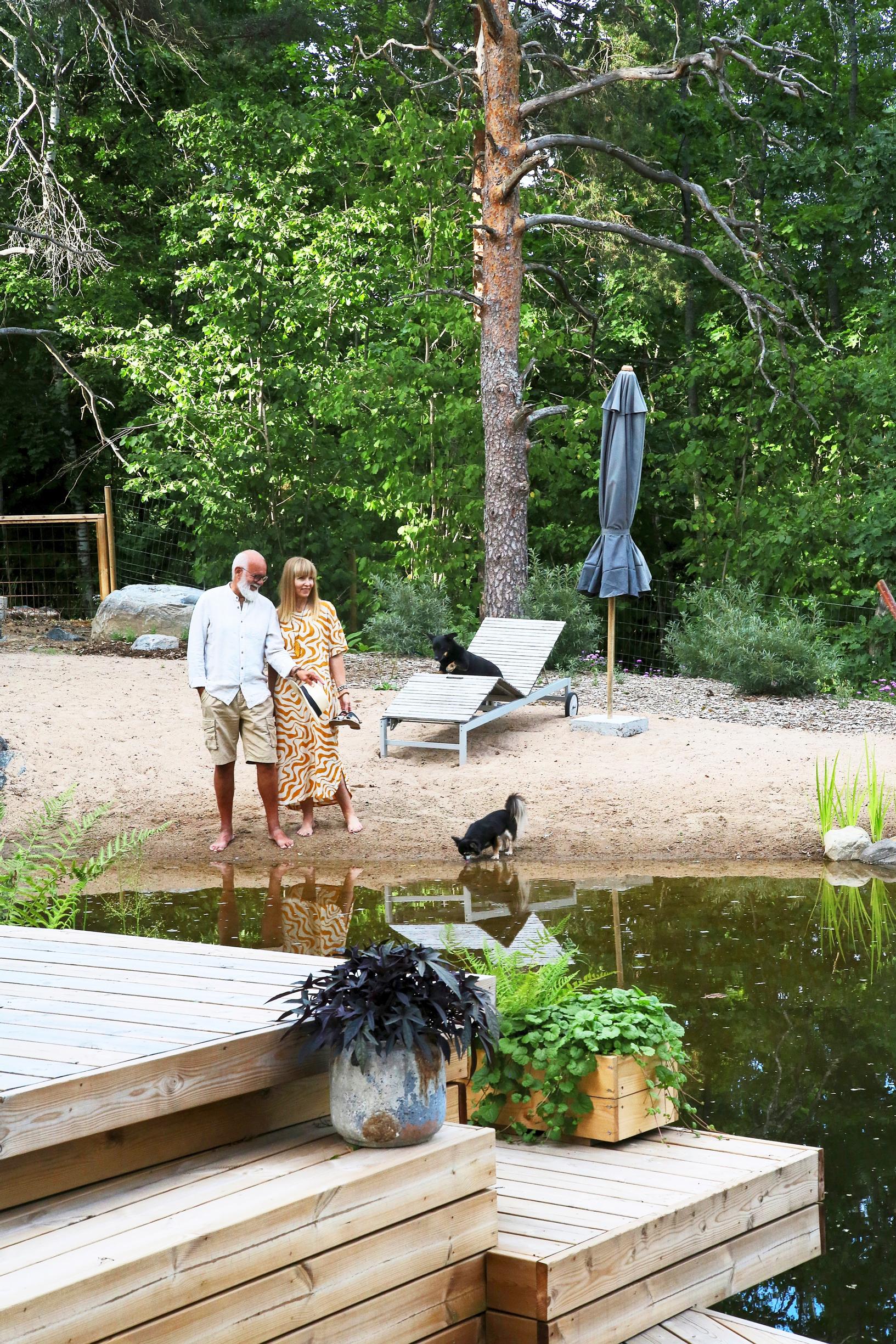
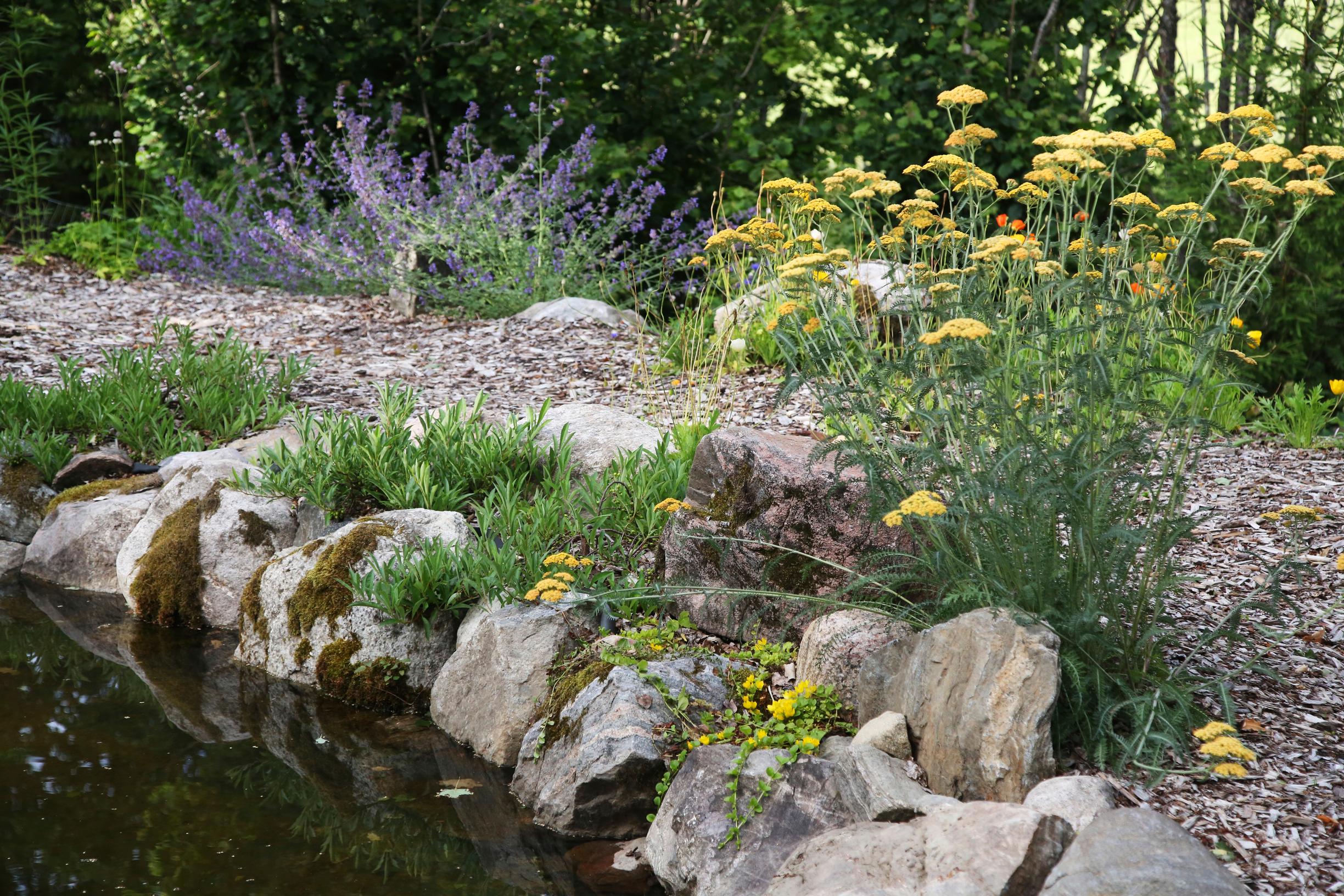
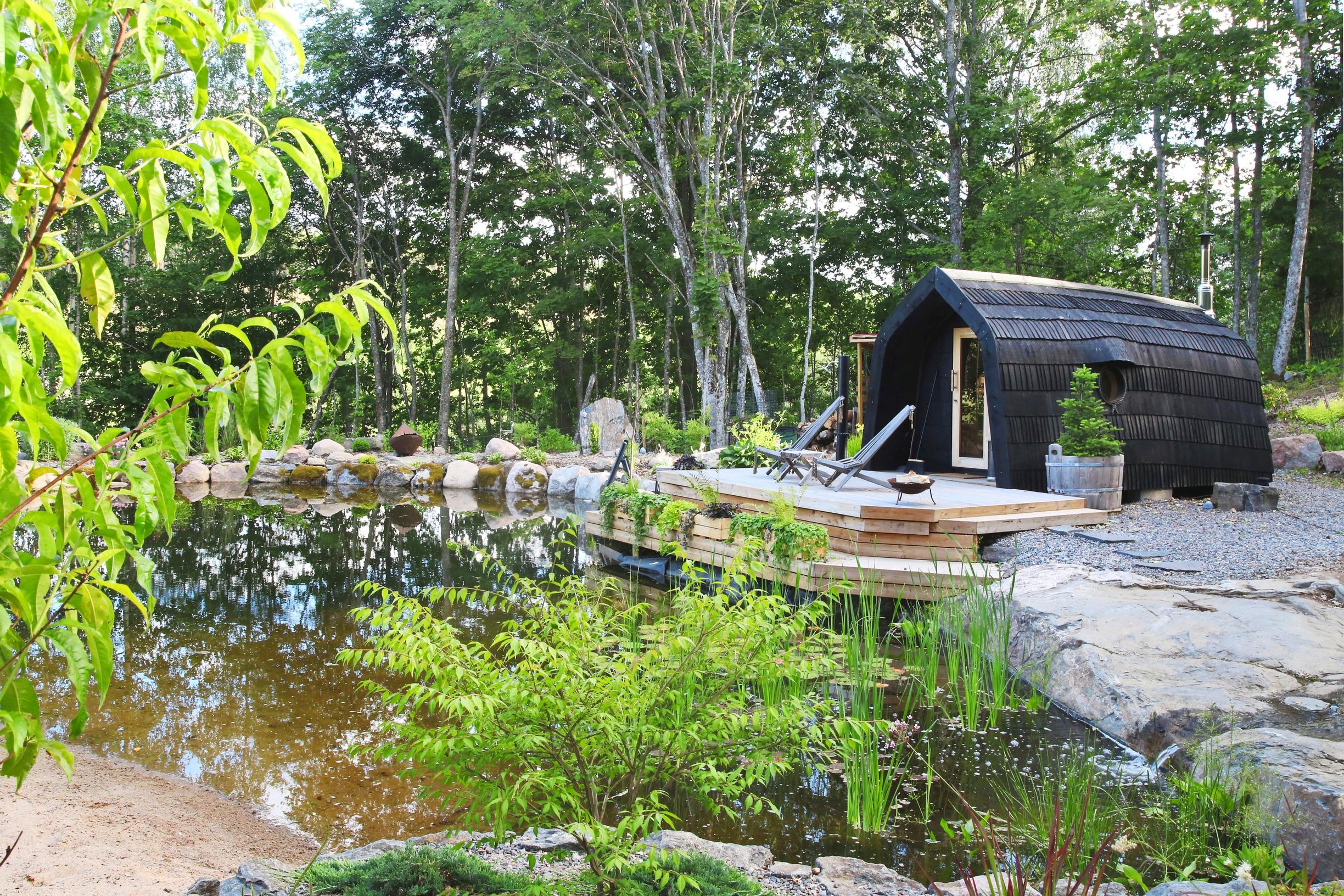
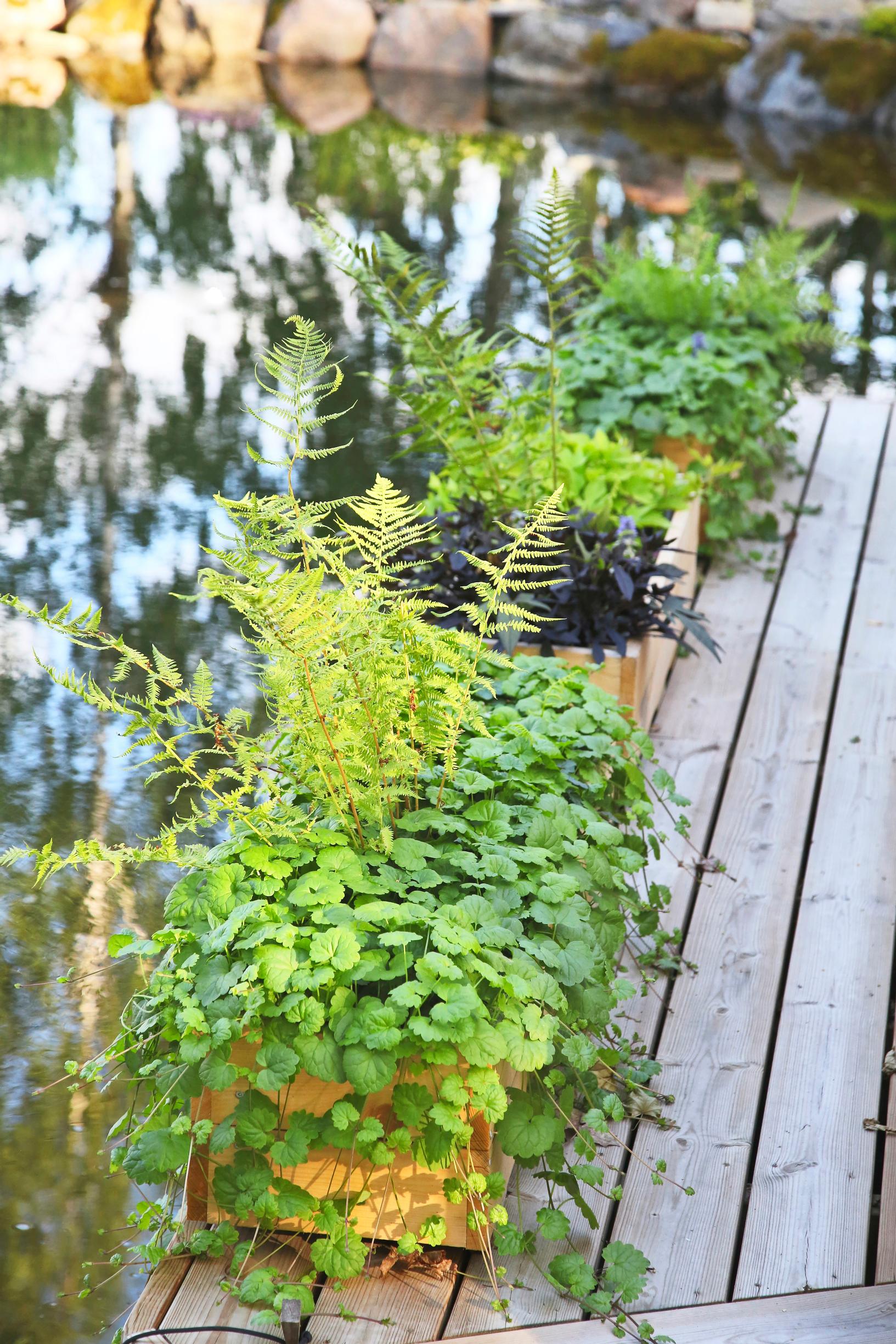
“Moss-covered stones create a natural feel that can only develop over time.”Ilkka
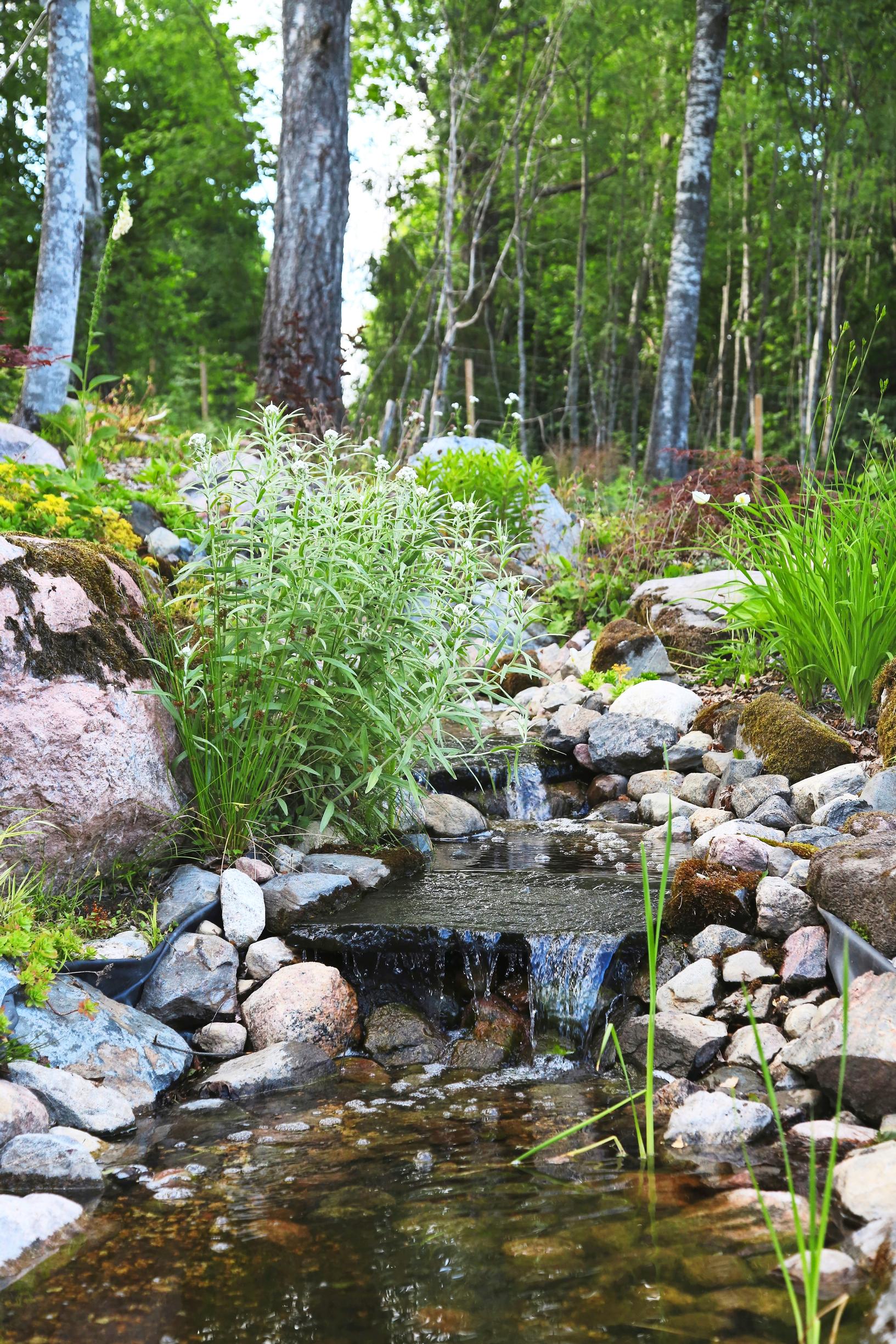
the pond and stream wew built using Firestone pond liner, which is more durable than standard pond foil. In addition to two professionals, extra help was needed to position the single-piece liner and its underlay.
A groove was cut into the bedrock with a diamond blade to secure the liner, then sealed with a bonding compound.
The pond edges were reinforced with a wooden frame. The liner was then placed on top, followed by the stones used to landscape the pond.
“We handled the stones with kid gloves, especially those covered in moss. Mossy stones bring a natural touch that only time can create,” Ilkka says.
All stones used around the pond come from the plot or were excavated when the house was built.
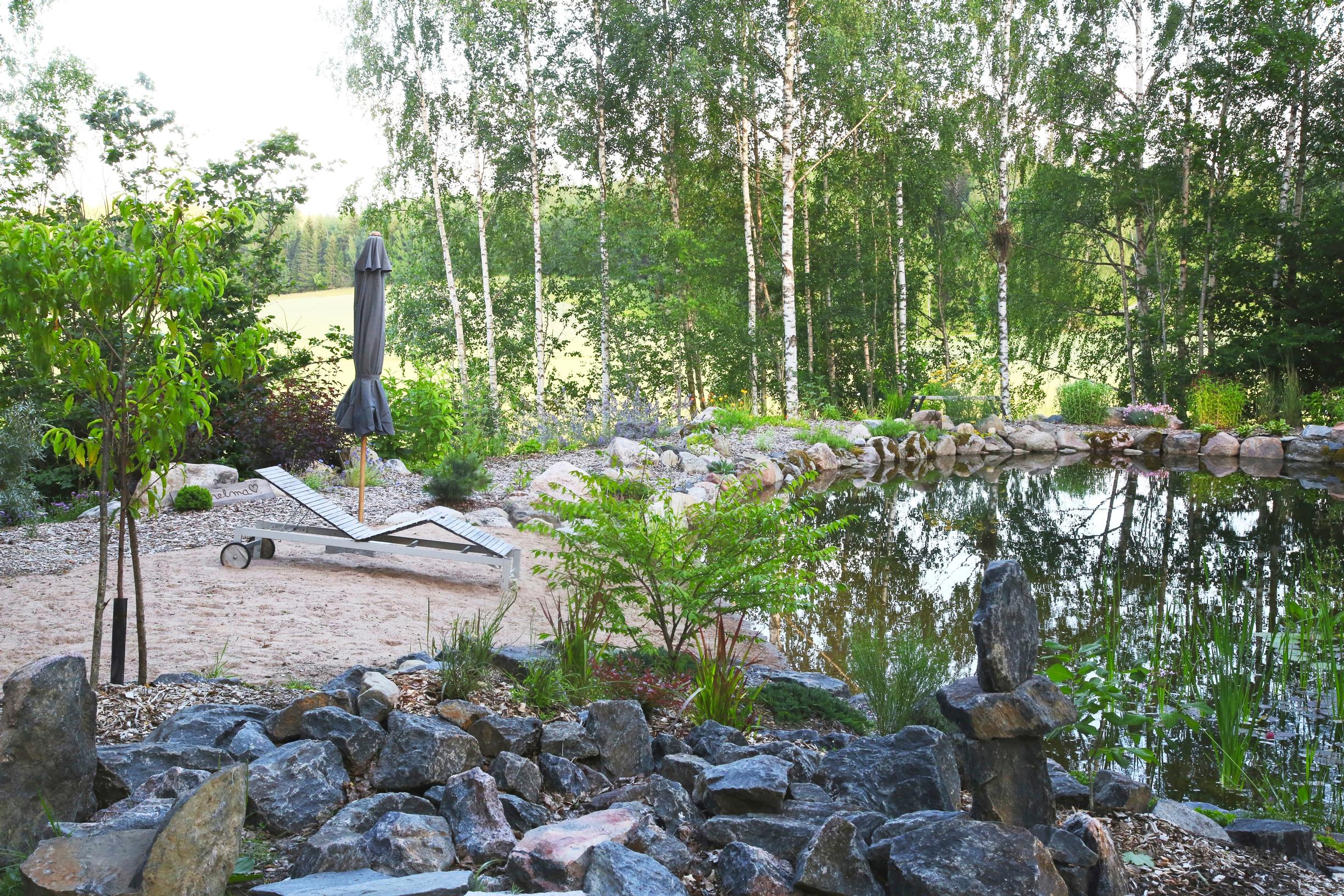
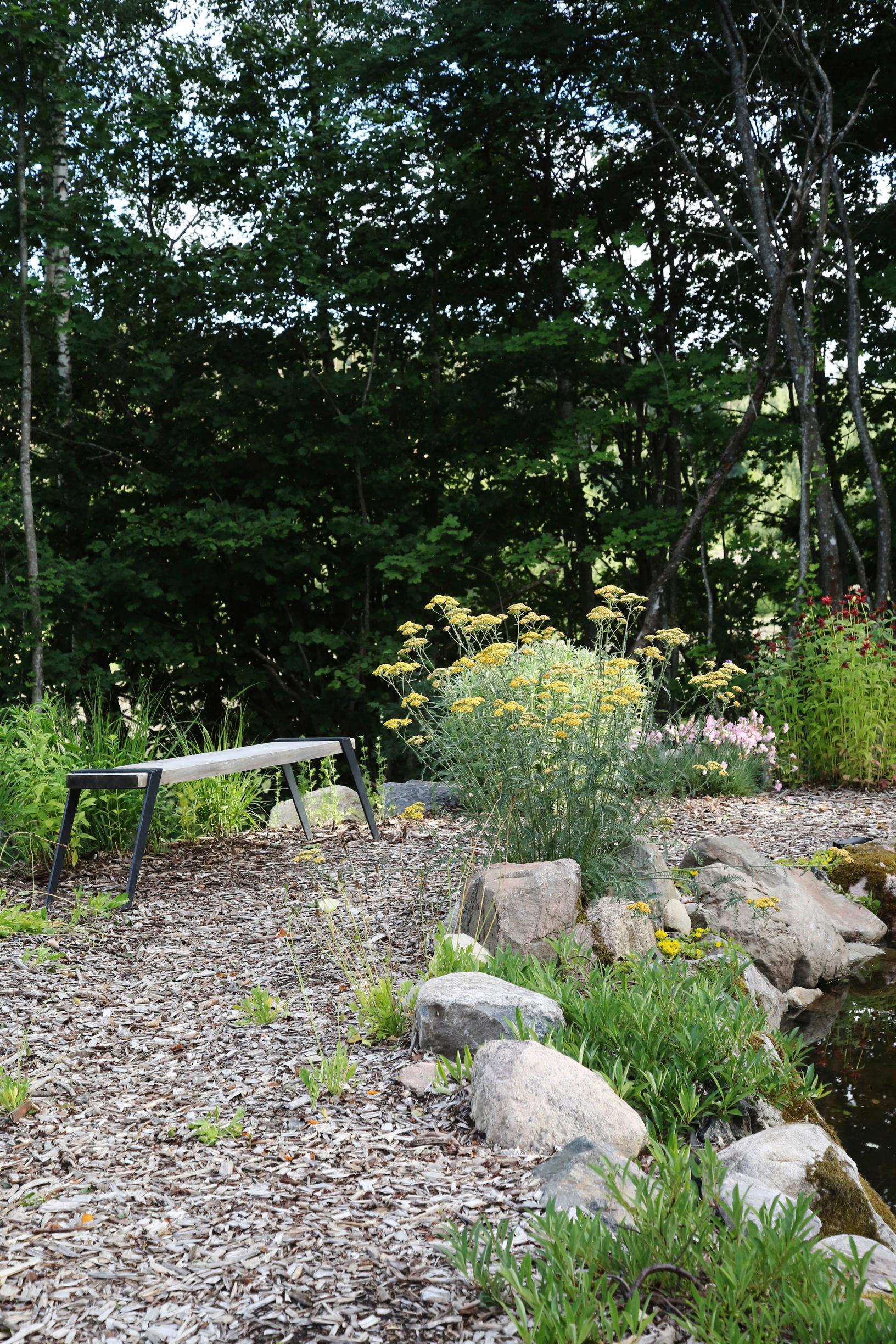
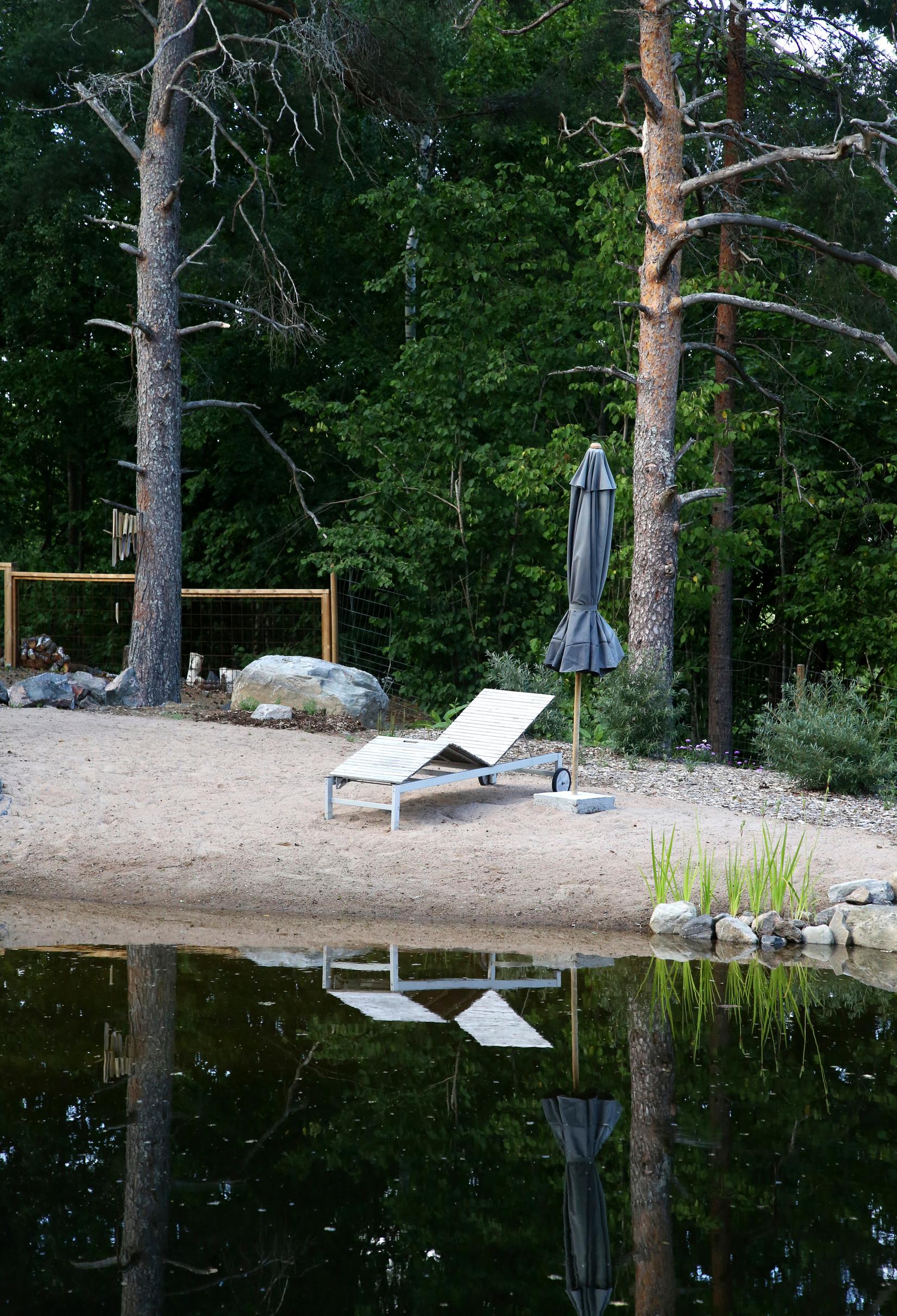
For planting aquatic plants, a layer of clay purchased from a nearby farmer was spread on the bottom of the pond, with geotextile on top to separate soil layers. The clay was shaped to accommodate plants at different depths. Over the geotextile, a special pond substrate was added to bind impurities and act as a biological filter.
Next to the bedrock, in the water-purifying and filtering zone, water lilies bloom. Also thriving there are aquatic bur-reed, bogbean, and water soldier, which floats around and occasionally anchors to the bottom.
Ritva swims daily, and in winter she plunges into an ice hole.
The pond also naturally attracted a few aquatic plants, including the lovely water-plantain, which is a special delight. Its white blossoms rise high above the water.
“During the first spring, we had a bit of algae, but once the plants gained momentum, they began oxygenating the water more effectively,” Ritva says happily.
Thanks to the plants, substrate, and water circulation, the water has stayed clean and algae-free.
“In this way, the pond also fosters biodiversity and offers habitats for a wide range of micro-organisms, which is very important to us,” Ritva says.
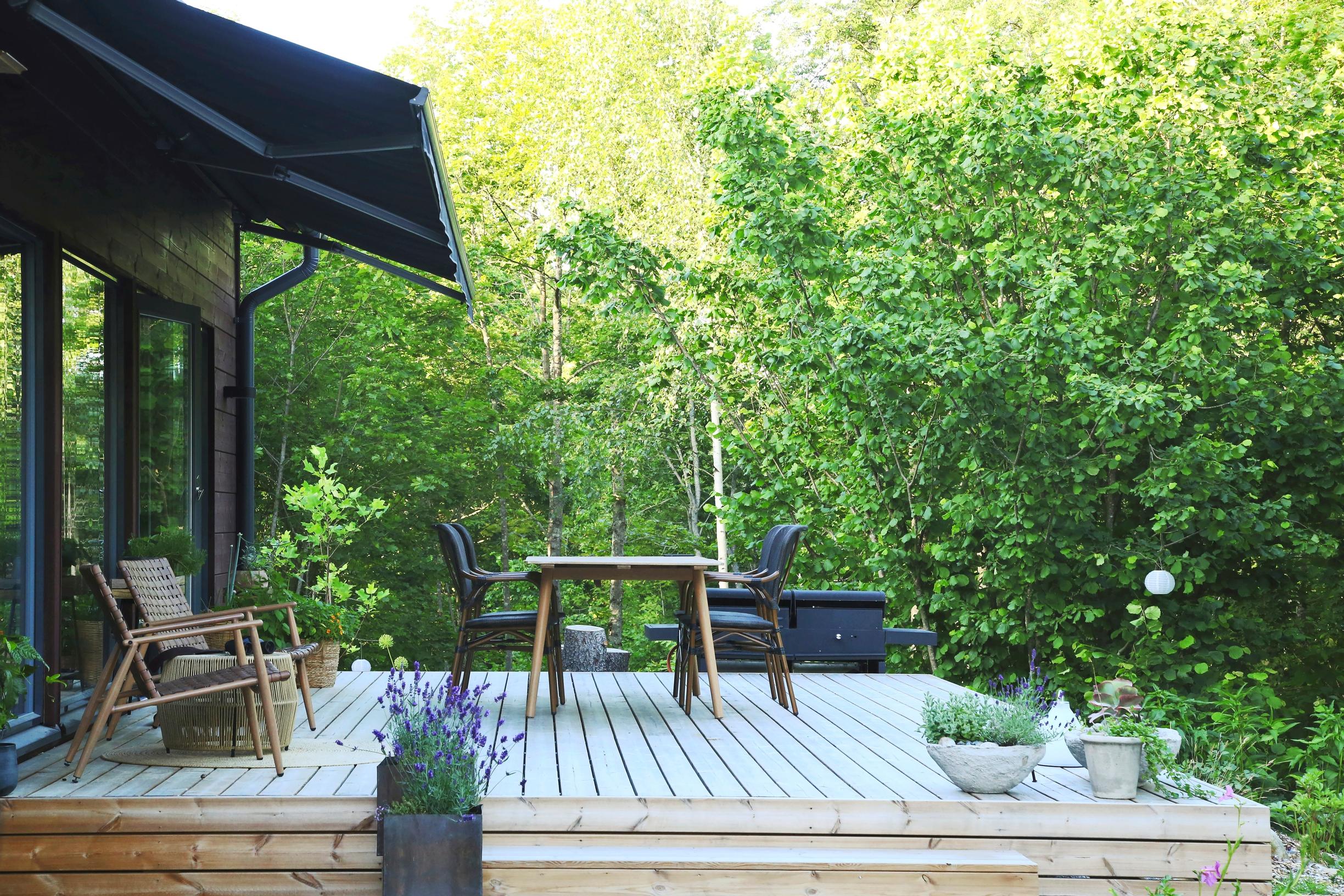
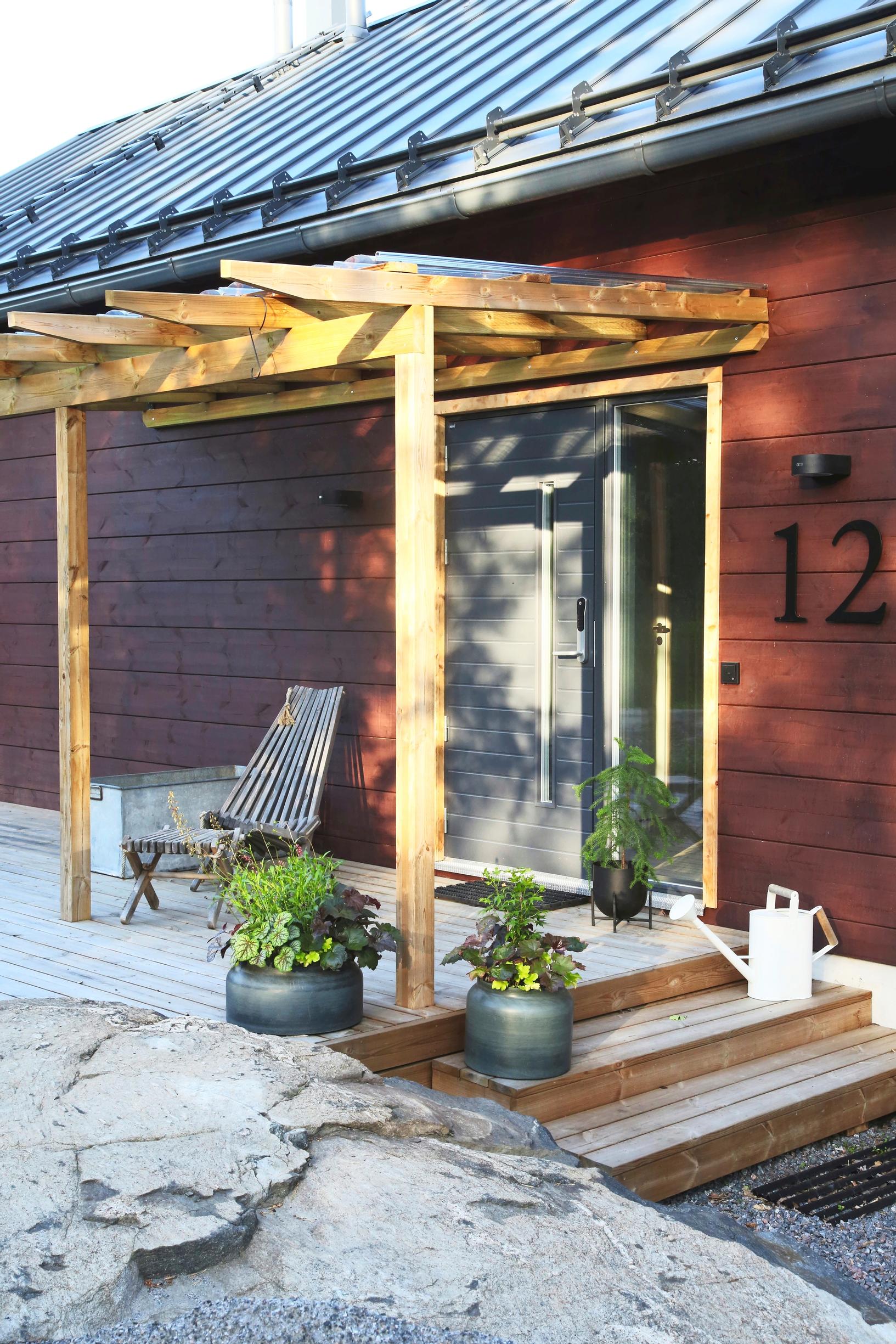
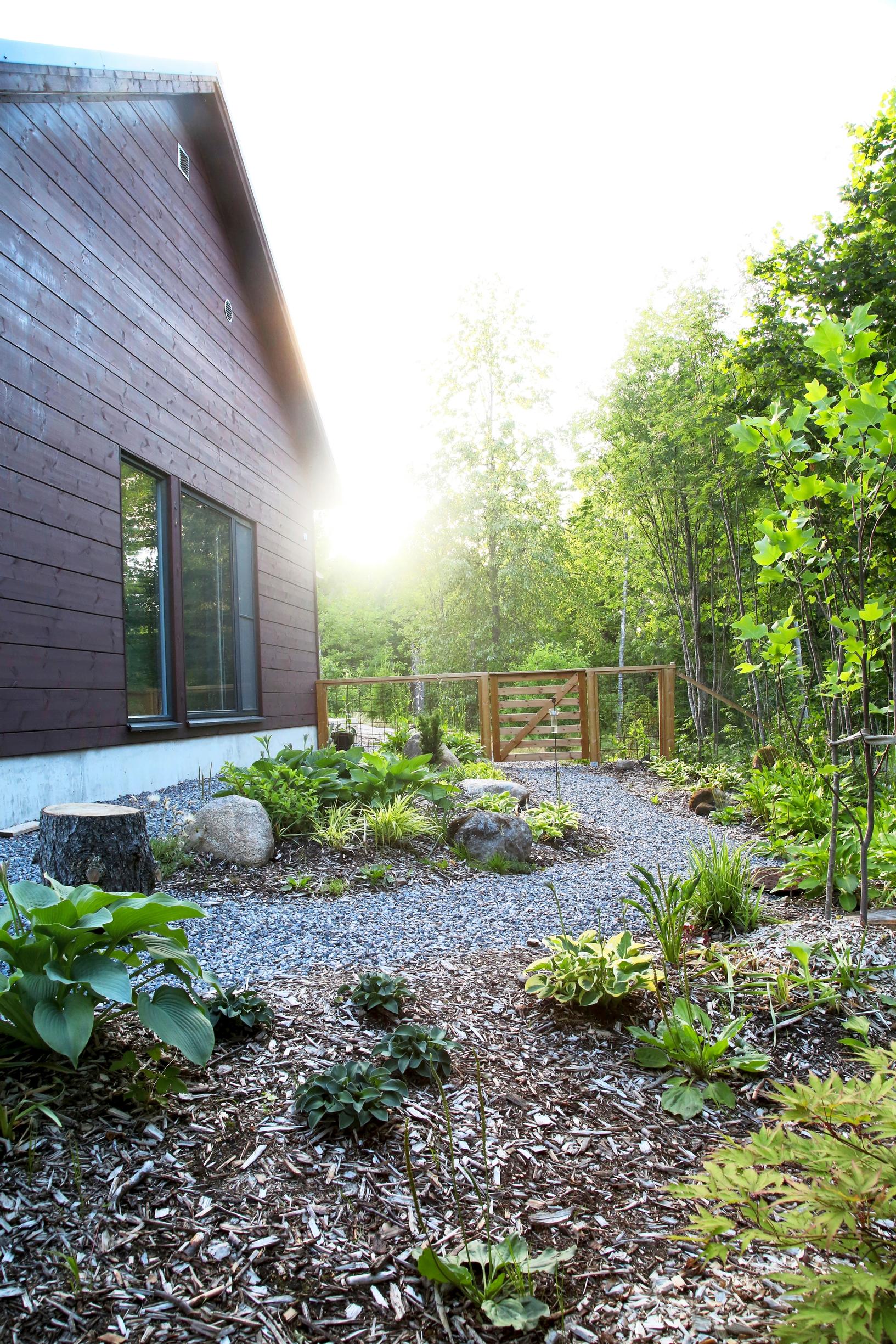
On the sandy beach and in the stream you can sometimes spot birds bathing. Newts, water striders, and great diving beetles showed up on their own. Dragonflies flit around the pond and are undisturbed by the daily swimmers.
Ritva swims every day, and in winter she takes a dip in an ice hole. Ilkka prefers summer swimming but occasionally braves the winter water.
A terrace was built in front of the sauna, designed with multiple levels.
“We wanted a wood-fired garden sauna by the pond and ordered a suitable one from Estonia. It’s a real treat to step from the sauna directly into the pond, whether in summer or winter,” Ilkka notes.
Extensive plantings were added around the pond to unify the woodland setting and the pond area. Near the sandy beach, they planted sea buckthorn and various conifers.
A zone of shorter perennials and airy grasses preserves the view from the terrace toward the distant lake and fields.
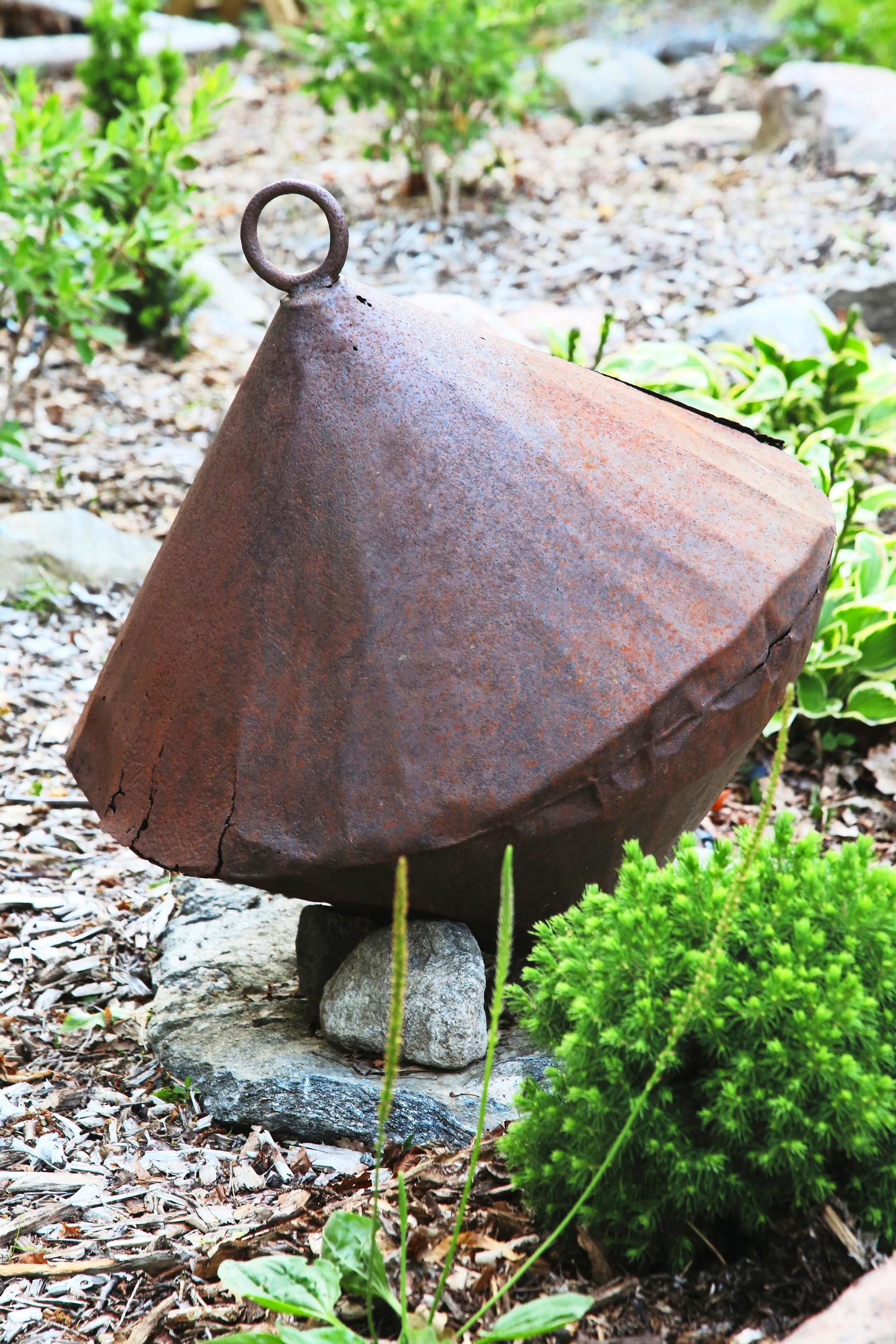
Otherwise, the couple aimed to preserve the existing vegetation. In the transition between the developed and natural areas, plant selections were made to complement both the scenery and the house’s architecture.
Naturally, Ritva and Ilkka chose ornamental plants they enjoy, but also ones that benefit local wildlife and boost biodiversity.
“We wanted to compensate for the environmental impact caused by construction by adding new plant cover. Right from the start, we tried to preserve the property’s natural features, hazel shrubs, and trees as much as possible,” Ritva says.


